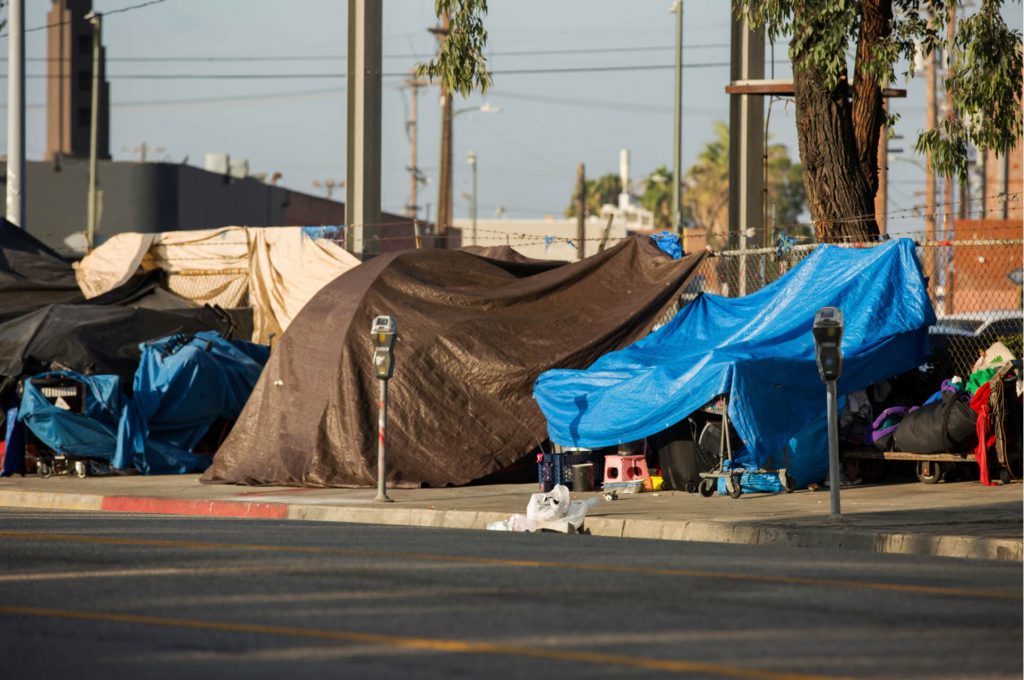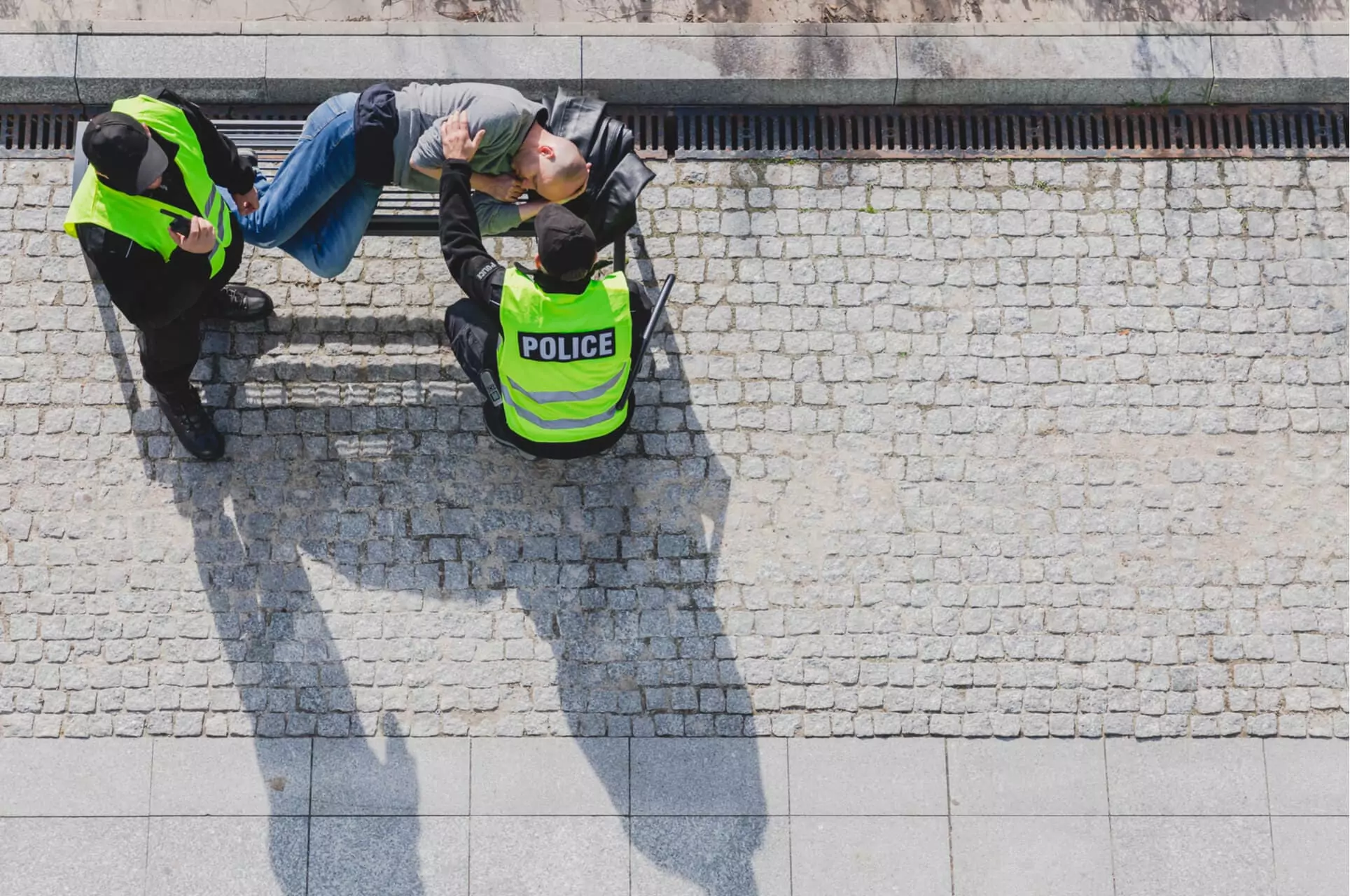It’s not uncommon for some people to think of the police as either problem solvers or enforcers. The problem solving comes about when there’s an emergency, accident, or another issue. The police are called in to sort out the problem, to try to find the stolen car or hold back the abusive customer. The enforcement comes in when they need to make sure everyone follows the rules while doling out punishments to those who don’t, in the form of parking tickets, speeding fines, and arrests.
But as we know, police do so much more than that, though much of it can get overlooked. Since 1963, the motto of the Los Angeles Police Department has been “To Protect And Serve”; since then, that same motto has been adopted by police departments around the country. While most people understand that police “protect”, they’re often less clear on how they “serve”.
One excellent example of the police being on the front lines of serving their community is in dealing with issues of homelessness – and in recent times, one of the states where this is most evident is California. Let’s take a look at some examples.
HOMELESSNESS IN CALIFORNIA
The U.S. Department of Housing and Urban Development (HUD) estimates there are more than half a million homeless people in the United States. While this was already rising before COVID-19, the pandemic has definitely made things worse, with a 2.2% rise from 2019-2020. California has estimated over 160,000 homeless people, 66,000 in Los Angeles County alone. In other words, about one in every three homeless people in the USA is in California and just under half of those are in Los Angeles. This number has jumped around 12% due to the pandemic, putting another 10,000 people on the streets of Los Angeles.

The role of the police in all of this is very complicated. While homelessness itself is not a crime in California, earlier this year The Los Angeles City Council approved a measure restricting homeless people from many public spaces, including parks, building entrances, sidewalks and so on. And although homeless people only commit a small percentage of overall crimes, many people feel that police should be more active in dealing with the homeless.
All of this means that the police tend to get drawn into issues involving homelessness, although some argue that this shouldn’t be the case. A number of police departments around the state have reacted to this by finding positive ways of helping to assist homeless people directly, or by creating teams to specifically help with homeless issues.
BAKERSFIELD – MERCY HOUSE
The City of Bakersfield, California, has purchased land and partnered with a private shelter organization to develop the Mercy House – Brundage Lane Navigation Center (BLNC). Opened in October 2020, the BLNC is what’s known as a ‘transitional shelter’, a shelter with ‘low-barrier’ entry requirements. Many homeless people may resist going to regular shelters due to issues such as intoxication, drug addiction, pet ownership, being in the company of significant others, medical issues, and mental health matters. The BLNC offers places to people who would not take a place in a regular shelter but who are ready to get off the streets, teaching them how to live in a house again before having the opportunity to be transitioned into longer-term housing.
The police’s role in assisting the BLNC has been critical. Police officers are usually in closer contact with the homeless people in their area than anyone else and act as the first point of contact between them and the shelter. In Bakersfield, the local police acted as advocates for the shelter, encouraging hard-to-reach or reluctant persons to accept a referral into the BLNC. The officers sold the idea of sheltering, making it more appealing by describing programs, positive outcomes, and success stories.
And the response was very positive: within one month of the BLNC being open, it served 61 people and housed four individuals who were ready to leave life on the streets.
ANAHEIM – CCRT
The Anaheim Police Department fields about 20,000 calls a year related to homelessness, representing about 13% of all service requests. This is obviously a huge drain on police time and resources, especially as many officers feel they are unprepared for dealing with these issues. As Lt. Lorenzo Glenn, Anaheim Police Department’s Homeless Liaison, said, “If you would have told me 30 years ago we would be responding to the amount of mental health and homeless issues we have today, I would have said no way.”

And so, as of January 1st, 2020, Anaheim set up the Community Care Response Team (CCRT). The CCRT is run like an emergency service center for a police or fire department, but instead, the team assists Anaheim’s homeless. Collaborating with the Anaheim police, the CCRT is staffed with caseworkers, health clinicians, social workers, and security officers.
Although the CCRT can be contacted directly, most of the calls come through the Anaheim 911 system. If the situation is an emergency or involves violence then the police may still respond to the call directly. But the vast majority of cases don’t require this kind of intervention and are instead passed along to the CCRT to get the individuals the assistance they need.
PASADENA – PORT
Similar to Anaheim’s CCRT is the Pasadena Outreach Response Team, or PORT. The Pasadena Police Department received more than 7,000 calls for service of homeless and or mental health crises in 2020. Whereas previously individual officers had to deal with these calls themselves, Pasadena police are now collaborating with PORT to handle nonviolent homeless calls.
The PORT team consists of a firefighter, a social worker/case manager and a peer outreach housing navigator. As they say, they tackle the issue of homelessness “by finding long-term solutions, one homeless person at a time”. The team helps homeless people with transportation, temporary housing, holding mail and more. And since the COVID-19 vaccine has been widely available, the team has hit the streets of Pasadena offering vaccinations to homeless residents. The program has been so successful that the Pasadena police department has allocated more than $200,000 to establish an additional team.

